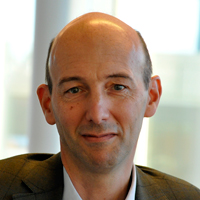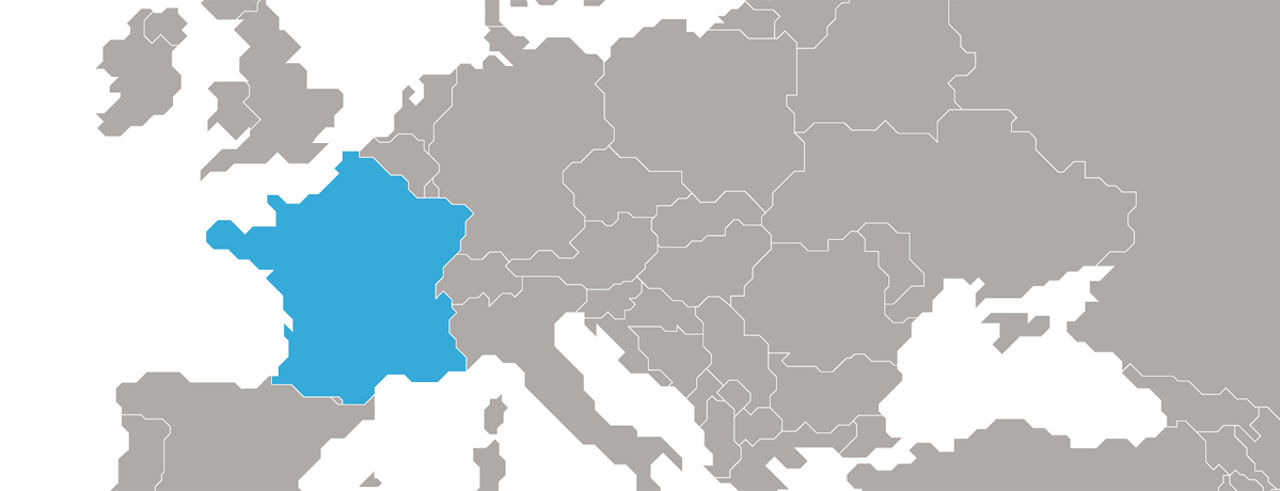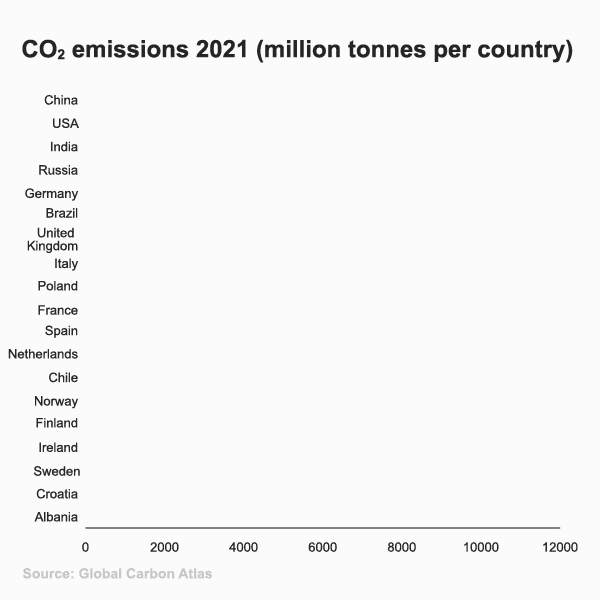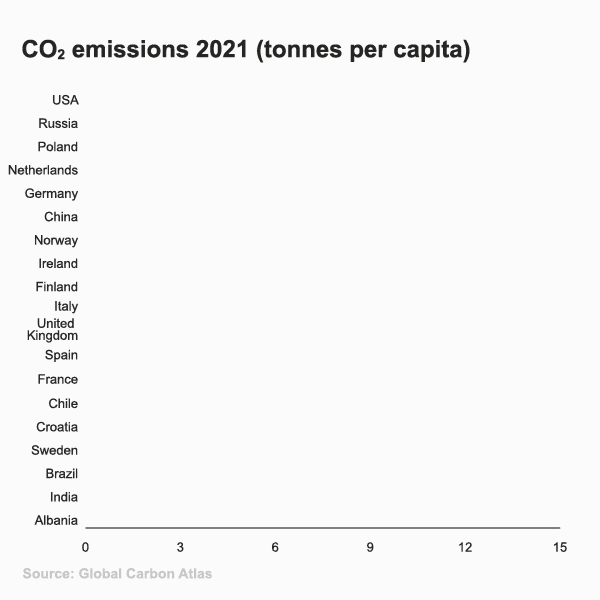
The development of renewable energy sources is part of Statkraft's global strategy, and France is part of that effort.
Country series: Green visions in France
Nuclear power nation France faces massive changes in the energy sector in the years to come. An ambitious commitment to wind and solar power is one of the measures that will ensure that the climate targets are met.
France has Europe's second highest energy consumption after Germany. The country is the world's second-largest producer of nuclear power after the United States and has a higher proportion of nuclear power in its power supply (72 per cent) than any other country in the world.
President Emmanuel Macron declared in 2018 that the country would reduce the nuclear share of the power supply to 50 per cent by 2035 and shut down 14 of its 58 nuclear reactors by 2035. The country will also shut down its four remaining coal power plants by 2022. Macron's commitments are based on the PPE (Programmation pluriannuelle de l'énergie), the Government's multi-year governance programme for energy policy.
All French nuclear power plants are owned and operated by EDF (Électricité de France), in which the French state owns 83.7 per cent of the shares (2020).

Building relationships
Hydropower is the second-largest power source in France. EDF holds 80 per cent of the hydropower licences in the country, while the French multinational energy company Engie holds 15 per cent. France is in tenth place worldwide in installed hydropower capacity, totalling 26 GW in 2020.
France's annual hydropower production is about 60 TWH, just over half of Norway's production. The French hydropower market is going to change, as state-owned licenses are scheduled to be placed on the open market after 75 years. Statkraft is among the companies that have shown interest in submitting tenders for several of these licenses. The EU has strongly urged France to open up to private companies, but it is still not clear when this will happen.
Statkraft established an office in Lyon, France in 2009, where ten employees work today.
"We're still in a phase where we're developing business opportunities. The oldest licences expired ten years ago, and that was why Statkraft wanted to establish itself in France at that time. However, the French state has extended EDF's licences one year at a time. Consequently, we're continuing our work on preparing the best possible offer for the day it becomes possible to submit offers for a licence," says Arnaud Bellanger, Statkraft's country manager in France and head of Hydropower France.
He emphasises that an offer is not just about price; it will be evaluated on three important criteria:
-
Price: That Statkraft proposes the best fee (based on the realised annual turnover) for the licence.
-
Electricity output growth: That Statkraft can guarantee an increase in energy production based on a contractual investment plan.
-
Stakeholders: The French State expects the candidates submitting offers to take into account the requirements from several stakeholders: Fishermen, environmental NGOs, tourist associations, farmers, local elected officials and inhabitants living near the concession.
"Ten years ago, several companies established teams in France to submit offers for hydropower licences. Today, for all practical purposes, Statkraft is the only one remaining with a clear and sound business organisation. We're constantly meeting with politicians and various stakeholders – we build relationships and explain who Statkraft is and why we are good for France," says Bellanger.


Arnaud Bellanger
Arnaud Bellanger is Statkraft's country manager in France. He is also country manager in Croatia during development of the company's operations there.

Facts about France
- Population: 67 million
- Capital: Paris
- Government: Democratic republic
- President: Emmanuel Macron
- Prime Minister: Élisabeth Borne
- Language: French
More renewable
France has no plans to completely phase out nuclear power, such as in neighbouring Germany, Belgium and Switzerland.
"France sees hydropower as a supplement to nuclear power – hydropower is important because it's so flexible. Therefore, the state will only issue licences to companies that have solid financial and technical capacity, and that's exactly what Statkraft can offer," says Bellanger.
France is subject to strict EU climate targets, and the PPE states that the country will triple the production of onshore wind power and produce five times the amount of solar energy by 2030 and develop offshore wind to a more modest degree.
"France has set ambitious targets for increasing its production of renewable power significantly in the coming years, especially within solar power," Bellanger says.
France aims to reduce greenhouse gas emissions by 40 per cent by 2030, compared with 1990 levels.
Increased fuel prices for petrol and diesel was one of the French government's climate measures. This triggered massive protests by the "yellow vest" grassroots movement. While President Macron argues that increased fuel taxes are necessary for France to reach its climate goals, the yellow vests protest against what they believe is an unfair policy that has an unequal impact on different groups. At the same time, the French government is being sued by four environmental organisations that claim France is failing to meet its obligations under the Paris Agreement.
Brings sun and wind to the market
In addition to preparing offers for hydropower licences, Statkraft's France office offers market access solutions to renewable energy developers and investors. In 2017, Statkraft signed what is known as a power purchase agreement (PPA) with Groupe Valeco, a leading developer of wind and solar power in France. Three new PPAs were signed with the same company in 2019.
"The development of renewable energy sources is part of Statkraft's global strategy, and France is part of that effort. We've created a complete service offering for wind and solar power developers to help them bring their electricity to the market. Our goal is to become a leading company in this area in France," says Arnaud Bellanger.
Developing wind and solar portfolio
As part of Statkraft’s ambitious international strategy for renewables, Statkraft France plans to develop wind and solar projects through pan-European or French acquisitions of development companies and planned projects, through project acquisition or through co-development of power plants.
On the top of these current activities, the new business areas of Statkraft can also become new businesses in France (EV charging, Hydrogen).
"With all our expertise areas, we can definitely play an active role in the energy transition in France," concludes Arnaud Bellanger.

France has set ambitious targets for increasing its production of renewable power. (Photo: Shutterstock)
Power sources in France
Installed capacity in GW in 2020:
-
Nuclear power: 61.3
-
Hydropower: 25.7
-
Conventional thermal power: 18.9
-
Wind power: 17.6
-
Solar power: 10.3
-
Other renewable sources: 2.1
Source: RTE (Réseau de Transport d'Electricité)
Top 10 in hydropower
Installed capacity in GW in 2020:
- China: 370
- Brazil: 109
- USA: 102
- Canada: 82
- Japan: 50
- India: 50
- Russia: 50
- Norway: 33
- Turkey: 31
- France: 26
Source: hydropower.org


Other country series articles

Country series: German energy revolution
2017 marked the first year when more power was produced from renewable sources than from coal in the industrial giant Germany. Nuclear power and coal power will be phased out over the next few years,...
Read more

Country series: Sweden global leader in reducing climate impact
Few countries in the world use more energy per capita than Sweden. Nevertheless, its greenhouse gas emissions are low, thanks to renewables generating a large part of the power consumed. The homeland...
Read more

Country series: Albania's hydropower important for the Balkans
Albania can play a key role when the Balkan countries phase out fossil fuels in favour of renewables. Statkraft already operates in Albania, but political risk can put a damper on further growth.
Read more

Country series: Ireland with an ambitious climate action plan
About 40 per cent of Ireland's electricity currently comes from renewable sources, but the country aims to increase this to 70 per cent by 2030.
Read more

Country series: Green ambitions in Spain
Renewable sources accounted for almost 47 per cent of the electricity produced in Spain in 2021. This is the highest share of renewable electricity since measurements began, but short of the Spanish...
Read more

Country series: Resource wealth in Brazil
Brazil is blessed with a wealth of natural resources and one of the world's cleanest power supplies. Large-scale investment in solar and wind power will provide even more renewable power in the years...
Read more

Country series: Ireland with an ambitious climate action plan
About 40 per cent of Ireland's electricity currently comes from renewable sources, but the country aims to increase this to 70 per cent by 2030.
Read more

Country series: United Kingdom, a leader in ambition
The United Kingdom has major ambitions for cutting its greenhouse gas emissions. The goal is to become a zero-emission society by 2050. Getting there will be a taxing process and requires strong poli...
Read more

Country series: Faster progress on renewables in Italy?
With its long coastline, high mountains and sunny Mediterranean islands, Italy should be well placed to increase its production of renewable energy. The challenge is to link power production with co...
Read more

Country series: The United States is still a land of opportunity
Since Statkraft opened an office in the U.S. in 2015, the company's U.S. operations have revolved largely around trading in CO2 allowances and renewable energy certificates. Statkraft is now well posi...
Read more

Country series: Renewables grow fast in Poland
Poland is one of the largest countries in Europe both in terms of energy consumption and energy production, and coal is still the main energy source. At the same time, Poland has the fastest growing...
Read more

Country series: Green visions in France
Nuclear power nation France faces massive changes in the energy sector in the years to come. An ambitious commitment to wind and solar power is one of the measures that will ensure that the climate ...
Read more

Country series: Chile leads the way with commitment to renewable energy
Chile has ambitious climate targets: 70 per cent of the country's electricity will come from renewable sources by 2030, and the country will be carbon neutral by 2050.
Read more